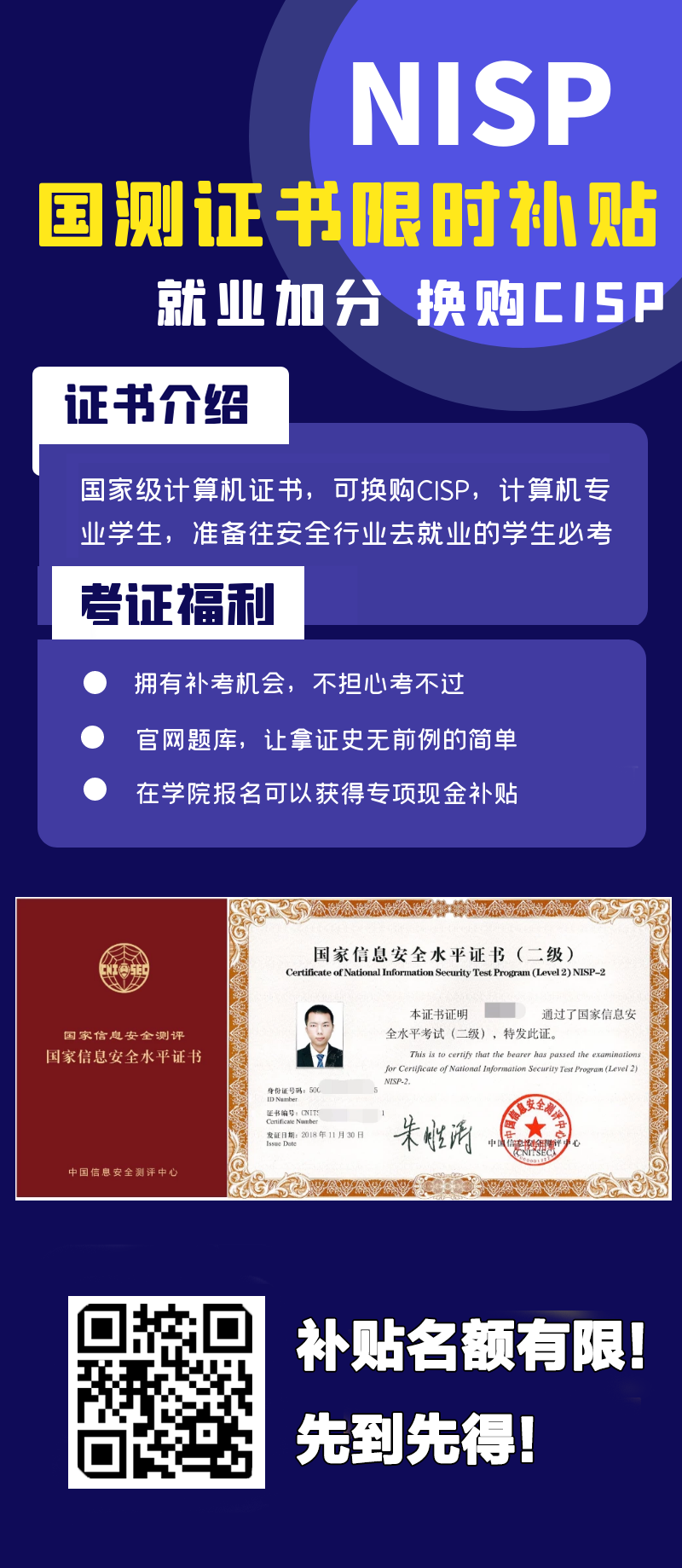PHA+PHNwYW4+5LuK5bm0OOaciOS7veeahOe+juWbvWJsYWNraGF05LiKU2FtIFRob21hc+aPkOWHuuS6huS4gOenjeaWsOeahOWPjeW6j+WIl+WMluaUu+WHu+WcuuaZr++8jOiAjOS4lOi/meenjeWcuuaZr+WPr+iDveS8tOmaj+edgHh4ZeOAgXNzcmbmiJbogIXlhbbku5bnm7jlhbPmvI/mtJ7nmoTlh7rnjrDogIzlh7rnjrDjgILmnKzmloflsIbkvJrlr7nmraTov5vooYzku4vnu43vvIzlubbpkojlr7l3b3JkcHJlc3PkuK3nmoTmvI/mtJ7ov5vooYzlpI3njrDjgII8L3NwYW4+CiAmbmJzcDsgJm5ic3A7ICZuYnNwOyAmbmJzcDsgJm5ic3A7ICZuYnNwOyAmbmJzcDsgJm5ic3A7ICZuYnNwOyAmbmJzcDsgJm5ic3A7ICZuYnNwOyAmbmJzcDsgJm5ic3A7CiAmbmJzcDsgJm5ic3A7ICZuYnNwOyAmbmJzcDsgJm5ic3A7ICZuYnNwOyAmbmJzcDsgJm5ic3A7ICZuYnNwOyAmbmJzcDsgJm5ic3A7ICZuYnNwOyAmbmJzcDsgJm5ic3A7ICZuYnNwOyAmbmJzcDsgJm5ic3A7ICZuYnNwOyAmbmJzcDsgJm5ic3A7ICZuYnNwOyAmbmJzcDsgJm5ic3A7ICZuYnNwOwogJm5ic3A7ICZuYnNwOyAmbmJzcDsgJm5ic3A7ICZuYnNwOyAmbmJzcDsgJm5ic3A7ICZuYnNwOyAmbmJzcDsgJm5ic3A7ICZuYnNwOyAmbmJzcDsgJm5ic3A7ICZuYnNwOzwvcD48aDI+5LiA44CBIOW8leiogDxicj48L2gyPjxwPuiHquS7jjIwMDnlubRTdGVmYW4gCkVzc2Fy5o+Q5Ye6UEhQ5Y+N5bqP5YiX5YyW6Zeu6aKY5Lul5p2l77yM5bey57uP5pyJ5aSn6YeP55qEQ1ZF5Ye6546w77yM5L6L5aaCQ1ZFLTIwMTctMTI5MzTjgIFDVkUtMjAxNy0xMjkzM+etieOAguS7iuW5tDjmnIjku73nmoTnvo7lm71ibGFja2hhdOS4ilNhbQogClRob21hc+aPkOWHuuS6huS4gOenjeaWsOeahOWPjeW6j+WIl+WMluaUu+WHu+WcuuaZr++8jOiAjOS4lOi/meenjeWcuuaZr+WPr+iDveS8tOmaj+edgHh4ZeOAgXNzcmbmiJbogIXlhbbku5bnm7jlhbPmvI/mtJ7nmoTlh7rnjrDogIzlh7rnjrDjgILmnKzmloflsIbkvJrlr7nmraTov5vooYzku4vnu43vvIzlubbpkojlr7l3b3JkcHJlc3PkuK3nmoTmvI/mtJ7ov5vooYzlpI3njrDjgII8L3A+PGgyPuS6jOOAgSBQSFDlj43luo/liJfljJbmvI/mtJ48L2gyPjxoMz4yLjEg5ryP5rSe566A5LuLPC9oMz48cD5waHDlj43luo/liJfljJbmvI/mtJ7kuZ/lj6tQSFDlr7nosaHms6jlhaXvvIzlvaLmiJDljp/lm6DkuLrnqIvluo/mnKrlr7nnlKjmiLfovpPlhaXnmoTluo/liJfljJblrZfnrKbkuLLov5vooYzmo4DmtYvvvIzlr7zoh7TmlLvlh7vogIXlj6/ku6XmjqfliLblj43luo/liJfljJbov4fnqIvvvIzku47ogIzlr7zoh7Tku6PnoIHmiafooYzjgIHmlofku7bmk43kvZzjgIHmiafooYzmlbDmja7lupPmk43kvZznrYnkuI3lj6/mjqflkI7mnpzjgILov5nkuIDnsbvmlLvlh7vlnKhqYXZh44CBcHl0aG9u562J6Z2i5ZCR5a+56LGh6K+t6KiA5Lit5Z2H5a2Y5Zyo44CCPC9wPjxoMz4yLjIg5ryP5rSe5Li76KaB5Y6f55CGPC9oMz48cD7lnKjlpKflnot3ZWLpobnnm67kuK3lj6/og73lrZjlnKjlpoLkuIvku6PnoIHvvJo8L3A+PHByZT48P3BocGNsYXNzJm5ic3A7QW55Q2xhc3MmbmJzcDt7CiZuYnNwOyZuYnNwOyZuYnNwOyZuYnNwO3B1YmxpYyZuYnNwOyRuYW1lOwpmdW5jdGlvbiZuYnNwO19fZGVzdHJ1Y3QoKSZuYnNwO3sKcGFzc3RocnUoJHRoaXMtPm5hbWUpOwp9Cn08L3ByZT48cD7lnKhBbnlDbGFzc+exu+S4re+8jOWtmOWcqOS4gOS4quWPmOmHjyRuYW1l77yM5ZCM5pe25Lmf5a2Y5Zyo5LiA5LiqZGVzdHJ1Y3Tmlrnms5XjgILlnKhfX2Rlc3RydWN05pa55rOV5Lit6LCD55So5LqGcGFzc3RocnXlh73mlbDvvIzogIzov5nkuKrlh73mlbDnmoTlj4LmlbDmgbDlpb3mmK/miJDlkZjlj5jph48kbmFtZeOAgl9fZGVzdHJ1Y3Tov5nkuIDnsbvmiJDlkZjmlrnms5XkvJrlnKjmn5Dkupvnibnlrprmg4XlhrXkuIvoh6rliqjosIPnlKjvvIzkvovlpoLlvZPnsbvnmoTlrp7kvovooqvplIDmr4Hml7blsLHkvJrosIPnlKhfX2Rlc3RydWN044CC6L+Z5LiA57G755qE5pa55rOV6KKr57uf56ew5Li6bWFnaWPmlrnms5XvvIzov5jljIXmi6xfX2NvbnN0cnVjdOOAgV9fdG9TdHJpbmfnrYnjgII8L3A+PHA+cGhw5YWB6K645L+d5a2Y5LiA5Liq5a+56LGh5pa55L6/5Lul5ZCO6YeN55So77yM6L+Z5Liq6L+H56iL6KKr56ew5Li65bqP5YiX5YyW44CCc2VyaWFsaXpl5Ye95pWw5Lya5bCG5LiA5Liq5a+56LGh55qE5ZCN5a2X5ZKM5LuW55qE5oiQ5ZGY5Y+Y6YeP55qE5YC85L+d5a2Y6LW35p2l77yM6ICMdW5zZXJpYWxpemXlh73mlbDliJnlj43lhbbpgZPogIzooYzkuYvlsIblr7nosaHov5jljp/vvIzlnKjov5nkuIDov4fnqIvkuK3lr7nosaHnmoTmiJDlkZjlj5jph4/lsIbkv53nlZnvvIzogIzmiJDlkZjlh73mlbDkv6Hmga/liJnkuI3kvJrlrZjlgqjjgILkvovlpoLvvJo8L3A+PHByZT48P3BocArigKbigKYKJG9iaiZuYnNwOz0mbmJzcDtuZXcmbmJzcDtBbnlDbGFzcygpOwokb2JqLT5uYW1lJm5ic3A7PSZuYnNwO+KAnHRlc3TigJ07CiRyZXMmbmJzcDs9Jm5ic3A7c2VyaWFsaXplKCRvYmopOwplY2hvJm5ic3A7JHJlczsKdmFyX2R1bXAodW5zZXJpYWxpemUoJHJlcykpOzwvcHJlPjxwPuWwhummluWFiOS8mui+k+WHuk86ODrigJ1BbnlDbGFzc+KAnToxOntzOjQ64oCdbmFtZeKAnTtzOjQ64oCddGVzdOKAnTt977yM54S25ZCO5Y+N5bqP5YiX5YyW6L+Y5Y6f5ZCO5Li677yaPC9wPjxwPjxhIGhyZWY9Imh0dHA6Ly9pbWFnZS4zMDAxLm5ldC9pbWFnZXMvMjAxODA4MjcvMTUzNTM2MTA2N181YjgzYzAyYjkwYTg4LnBuZyIgdGFyZ2V0PSJfYmxhbmsiPjxpbWcgYWx0PSIxLnBuZyIgc3JjPSJodHRwOi8vaW1hZ2UuMzAwMS5uZXQvaW1hZ2VzLzIwMTgwODI3LzE1MzUzNjEwNjdfNWI4M2MwMmI5MGE4OC5wbmchc21hbGwiIHN0eWxlPSJibG9jayIgd2lkdGg9IjQ3NSI+PC9hPjwvcD48cD7ogIzlvZPohJrmnKzmiafooYznu5PmnZ/ml7bvvIzlr7nosaHlsIbkvJrooqvplIDmr4HvvIzmraTml7bkvJrosIPnlKhfX2Rlc3RydWN05Ye95pWw77yM5aaC5p6c5oiR5Lus5bCGbmFtZeWPmOmHj+iuvue9ruS4undob2Ftae+8jOWImeWwhuS8muaJp+ihjOezu+e7n+WRveS7pO+8mjwvcD48cD48ZW0+aW50ZXJuYWxceHh4eDwvZW0+PC9wPjxwPuWboOatpOW9k+aIkeS7rOWPr+S7peaOp+WItnVuc2VyaWFsaXpl5Ye95pWw55qE6L6T5YWl77yM5ZCM5pe25Zyo5pyN5Yqh56uv5Luj56CB5Lit5a2Y5Zyo5LiA5Liq57G75ruh6Laz5Lul5LiL5p2h5Lu277yaPC9wPjxvbD48bGk+5YyF5ZCr5LiA5Liq6a2U5pyv5pa55rOV77yM5L6L5aaCX19kZXN0cnVjdDwvbGk+PGxpPumtlOacr+aWueazleS4reebtOaOpeaIluiAhemXtOaOpeWtmOWcqOWNsemZqeWHveaVsO+8jOS+i+WmgmV2YWzjgIFjYWxsX3VzZXJfZnVuY+etiTwvbGk+PGxpPuiDveWkn+mAmui/h+iuvue9ruaIkOWRmOWPmOmHj+aOp+WItuWNsemZqeWHveaVsOWPguaVsDwvbGk+PC9vbD48cD7lpoLmnpzmiJDlkZgkbmFtZeWxnuaAp+S4jeS4unB1YmxpY++8jOWImemcgOimgemAmui/h+aIkOWRmOWHveaVsOi/m+ihjOS/ruaUue+8jOiAjOWmguaenOS4unByb3RlY3RlZO+8jOaIkeS7rOi/mOWPr+S7pemAmui/h+aWsOW7uuS4gOS4quWtkOexu++8jOeEtuWQjuWcqOWtkOexu+S4rei/m+ihjOi1i+WAvOWSjOW6j+WIl+WMlu+8jOS+i+Wmgu+8mjwvcD48cHJlPmNsYXNzJm5ic3A7Q2hpbGRDbGFzcyZuYnNwO2V4dGVuZHMmbmJzcDtBbnlDbGFzc3sKcHJvdGVjdGVkJm5ic3A7JHdjOwpwdWJsaWMmbmJzcDtmdW5jdGlvbiZuYnNwO21ha2UoKXsKJHRoaXMtPndjJm5ic3A7PSZuYnNwO25ldyZuYnNwO0FueUNsYXNzKCk7CiR0aGlzLT53Yy0+bmFtZSZuYnNwOz0mbmJzcDsmIzM5O3dob2FtaSYjMzk7OwpyZXR1cm4mbmJzcDtzZXJpYWxpemUoJHRoaXMtPndjKTsKfQp9PC9wcmU+PHA+5q2k5pe25bqP5YiX5YyW5YaF5a655Li677yaTzo4OuKAnUFueUNsYXNz4oCdOjE6e3M6NzrigJ0qbmFtZeKAnTtzOjY64oCdd2hvYW1p4oCdO33vvIzlhbbkuK1uYW1l6YOo5YiG5pyJN+S4quWtl+iKguaYr+WboOS4uui/mOWMheWQq+S4pOS4qmFzY2FsbOeggeS4ujDnmoTkuI3lj6/op4HlrZfnrKbvvIzkuozov5vliLbkuLolMDAqJTAw77yM6L+Z5piv5Li65LqG5qCH6K+GcHJvdGVjdGVk5ZKMcHJpdmF0ZeWPmOmHj+OAguWboOatpOWmguaenOWtmOWcqHByb3RlY3RlZOWPmOmHj++8jOW6j+WIl+WMlueahOWGheWuueW/hemhu+mAmui/h+S6jOi/m+WItuaWueW8j+S8oOWFpeaIluiAhei/m+ihjGJhc2U2NOe8lueggeOAgjwvcD48cD7mnIDnu4jkvKDlhaXnmoTluo/liJfljJblhoXlrrnooqvlj43luo/liJfljJbml7bvvIzlsIblr7zoh7Tov5znqIvlkb3ku6TmiafooYzjgII8L3A+PGgyPuS4ieOAgea1gei9rOaNouWZqO+8iFN0cmVhbSBXcmFwcGVyc++8iTwvaDI+PHA+UEhQ55qE5paH5Lu25pON5L2c5Ye95pWw77yM5L6L5aaCZm9wZW4oKeOAgWNvcHkoKeOAgWZpbGVfZXhpc3RzKCnjgIFmaWxlc2l6ZSgp562J5Ye95pWw6IO95aSf5o6l5Y+X6K645aSa5YaF572u55qE5rWB6L2s5o2i5Zmo77yMcGhwIDUuM+S7peWQjueahOS4u+imgea1gei9rOaNouWZqOWMheaLrO+8mjwvcD48bGk+ZmlsZTovLzwvbGk+PGxpPmh0dHA6Ly88L2xpPjxsaT5mdHA6Ly88L2xpPjxsaT5waHA6Ly88L2xpPjxsaT56bGliOi8vPC9saT48bGk+ZGF0YTovLzwvbGk+PGxpPmdsb2I6Ly88L2xpPjxsaT5waGFyOi8vPC9saT48cD7igJxwaHA6Ly/igJ3nm67liY3lnKh4eGXjgIHmnKzlnLDmlofku7bljIXlkKvmiJbogIVTU1JG562J5ryP5rSe57uP5bi46KKr55So5Yiw77yM5L6L5aaCcGhwOi8vaW5wdXTvvIzlkIzml7bov5jog73pgJrov4figJxwaHA6Ly9maWx0ZXIvY29udmVydC5iYXNlNjQtCiAKZW5jb2RlL3Jlc291cmNlPWluZGV4LnBocOKAneadpeivu+WGmeaWh+S7tuOAguKAnGZ0cDovL+KAneOAgeKAnGRhdGE6Ly/igJ3jgIHigJxodHRwOi8v4oCd5YiZ5Y+v55So5LqO6L+c56iL5paH5Lu25YyF5ZCr77yM6ICM5Zyo5LmL5YmN4oCdcGhhcjovL+KAneWImeW+iOWwkeW8lei1t+azqOaEj+OAgjwvcD48aDM+My4xIHBoYXLmtYHovazmjaLlmag8L2gzPjxwPiDmoLnmja5waHDlrpjmlrnmiYvlhozvvIxwaGFy57G75Ly85LqOamF2YeeahGphcuW9kuaho+agvOW8j++8jOS9huWug+WPr+ebtOaOpeeUsXBocOacrOi6q+WIm+W7uuWSjOS9v+eUqO+8jOWboOatpOebuOW9k+eBtea0u+OAguKAnXBoYXI6Ly/igJ3liJnlhYHorrjmiJHku6zlsIblpJrkuKrmlofku7blvZLlhaXkuIDkuKrmnKzlnLDmlofku7blpLnjgII8L3A+PHA+IOWIm+W7uuS4gOS4qnBoYXLmlofku7bljYHliIbnroDljZXvvJo8L3A+PHByZT5AdW5saW5rKCJwaGFyLnBoYXIiKTsKJHBoYXImbmJzcDs9Jm5ic3A7bmV3Jm5ic3A7UGhhcigicGhhci5waGFyIik7CiRwaGFyLT5zdGFydEJ1ZmZlcmluZygpOwokcGhhci0+YWRkRnJvbVN0cmluZygidGVzdC50eHQiLCJ0ZXN0Iik7CiRwaGFyLT5zZXRTdHViKCI8P3BocCZuYnNwO19fSEFMVF9DT01QSUxFUigpOyZuYnNwOz8+Iik7CiRwaGFyLT5zZXRNZXRhZGF0YSgkdGhpcy0+d2MpOwokcGhhci0+c3RvcEJ1ZmZlcmluZygpOzwvcHJlPjxwPumAmui/h3NldE1ldGFkYXRh5Y+v5Lul5bCG5a+56LGh5Lul5bqP5YiX5YyW55qE5b2i5byP5a2Y5YWlcGhhcuaWh+S7tuS4re+8mjwvcD48cD48YSBocmVmPSJodHRwOi8vaW1hZ2UuMzAwMS5uZXQvaW1hZ2VzLzIwMTgwODI3LzE1MzUzNjI0NzRfNWI4M2M1YWE4YjlmOS5wbmciIHRhcmdldD0iX2JsYW5rIj48aW1nIGFsdD0iMi5wbmciIHNyYz0iaHR0cDovL2ltYWdlLjMwMDEubmV0L2ltYWdlcy8yMDE4MDgyNy8xNTM1MzYyNDc0XzViODNjNWFhOGI5ZjkucG5nIXNtYWxsIiBzdHlsZT0iYmxvY2siIHdpZHRoPSI2OTAiPjwvYT48L3A+PHA+5b2TbWV0YWRhdGHpgJrov4dzZXRNZXRhZGF0YeWtmOWCqOWQju+8jOino+aekOaXtu+8jHBocOWGheaguOS4reS8muiwg+eUqHBoYXJfcGFyc2VfbWV0YWRhdGHlh73mlbDvvJo8L3A+PHA+PGEgaHJlZj0iaHR0cDovL2ltYWdlLjMwMDEubmV0L2ltYWdlcy8yMDE4MDgyNy8xNTM1MzYyNTU1XzViODNjNWZiM2U0M2MucG5nIiB0YXJnZXQ9Il9ibGFuayI+PGltZyBhbHQ9IjMucG5nIiBzcmM9Imh0dHA6Ly9pbWFnZS4zMDAxLm5ldC9pbWFnZXMvMjAxODA4MjcvMTUzNTM2MjU1NV81YjgzYzVmYjNlNDNjLnBuZyFzbWFsbCIgc3R5bGU9ImJsb2NrIiB3aWR0aD0iNjkwIj48L2E+PC9wPjxwPuWHveaVsOS4reiwg+eUqOS6hnBocF92YXJfdW5zZXJpYWxpemXlh73mlbDvvIzmraTml7bkvKDlhaXnmoRtZXRhZGF0YeWwhuS8muiiq+WPjeW6j+WIl+WMluOAgjwvcD48aDM+My4yIOaUu+WHu+aWueazlTwvaDM+PHA+IOaDs+imgemAmui/h3BoYXLlrozmiJDkuIDmrKHmlLvlh7vpnIDopoHmu6HotrPkuKTkuKrliY3mj5DmnaHku7bvvJo8L3A+PG9sPjxsaT7lkJHnm67moIfnq5nngrnkuIrkvKDljIXlkKvmlLvlh7twYXlsb2Fk55qEcGhhcuW9kuaho+aWh+S7tjwvbGk+PGxpPuiDveWkn+WwhuWMheWQq+iiq+S4iuS8oOaWh+S7tueahHBoYXI6Ly94eHguanBnL3Rlc3QudHh06Lev5b6E5Lyg5YWl5Yiw5paH5Lu25pON5L2c5Ye95pWw5Lit44CCPC9saT48L29sPjxwPuesrOS4gOeCueWPquimgeiDveWkn+S4iuS8oGpwZ+aWh+S7tuWNs+WPr++8jOWboOS4unBoYXI6Ly94eHguanBn5ZCM5qC35Lmf5Lya6KKr5b2T5L2ccGhhcuaWh+S7tuino+aekO+8jOWboOatpOWPr+S7peWcqHdlYuW6lOeUqOS4reaJvuaWh+S7tuS4iuS8oOWcsOaWueWNs+WPr+OAguesrOS6jOeCueWImemcgOimgeWtmOWcqGZpbGVfZXhpc3RzKCRmaWxlbmFtZSnvvIzopoHmsYLoh7PlsJHog73mjqfliLYkZmlsZW5hbWXnmoTliY3lh6DkuKrlrZfnrKbvvIzljbPkv53or4Hog73kvb/nlKjigJ1waGFyOi8v4oCd5Y2P6K6u5byV55So55uu5qCH5paH5Lu277yM5Y+v5Lul6YCa6L+H5Zyo5Luj56CB5Lit5a6a5L2N5paH5Lu25pON5L2c5Ye95pWw55qE5Y+C5pWw5piv5ZCm5Y+v5o6n5p2l6I635Y+W44CCPC9wPjxoMj7lm5vjgIF3b3JkcHJlc3PkuK3mvI/mtJ7lpI3njrDkuI7liIbmnpA8L2gyPjxoMz40LjEg5ryP5rSe5aSN546wPC9oMz48cD7lpI3njrDnjq/looPvvJp3b3JkcHJlc3MmbmJzcDsgNC44Ljc8L3A+PHA+6aaW5YWI6ZyA6KaB5a6J6KOFd29vY29tbWVyY2Xmj5Lku7bvvIzlkI7lj7Dlronoo4XmnIDmlrDniYjljbPlj6/vvJo8L3A+PHA+PGEgaHJlZj0iaHR0cDovL2ltYWdlLjMwMDEubmV0L2ltYWdlcy8yMDE4MDgyNy8xNTM1MzYyNjgxXzViODNjNjc5ZTQ1NTMucG5nIiB0YXJnZXQ9Il9ibGFuayI+PGltZyBhbHQ9IjQucG5nIiBzcmM9Imh0dHA6Ly9pbWFnZS4zMDAxLm5ldC9pbWFnZXMvMjAxODA4MjcvMTUzNTM2MjY4MV81YjgzYzY3OWU0NTUzLnBuZyFzbWFsbCIgc3R5bGU9ImJsb2NrIiB3aWR0aD0iNjc0Ij48L2E+PC9wPjxwPueEtuWQjuW7uueri+S4gOS4quWFt+acieS9nOiAheadg+mZkOeahOi0puWPt++8mjwvcD48cD48YSBocmVmPSJodHRwOi8vaW1hZ2UuMzAwMS5uZXQvaW1hZ2VzLzIwMTgwODI3LzE1MzUzNjI3NzNfNWI4M2M2ZDUwNzhhZC5wbmciIHRhcmdldD0iX2JsYW5rIj48aW1nIGFsdD0iNS5wbmciIHNyYz0iaHR0cDovL2ltYWdlLjMwMDEubmV0L2ltYWdlcy8yMDE4MDgyNy8xNTM1MzYyNzczXzViODNjNmQ1MDc4YWQucG5nIXNtYWxsIiBzdHlsZT0iYmxvY2siIHdpZHRoPSI2OTAiPjwvYT48L3A+PHA+d29yZHByZXNz5ZyoNC4554mI5pys5piv6buY6K6k5byA5ZCveG1scnBj55qE77yM5Zug5q2k5Y+v5Lul6YCa6L+HeG1scnBj5LiK5Lyg5YyF5ZCr5LqGcGF5bG9hZOeahOWbvueJh++8mjwvcD48cHJlPjxjb2RlPiRmaWxlbmFtZSA9IDxzcGFuPiJwaGFyLmpwZyI8L3NwYW4+OyAmbmJzcDsgPHNwYW4+Ly9wYXlsb2Fk5Zu+54mHPGJyPjwvc3Bhbj4mbmJzcDsgJm5ic3A7ICR1c2VybmFtZSA9IDxzcGFuPiYjMzk7YXV0aG9yJiMzOTs8L3NwYW4+OyZuYnNwOyA8c3Bhbj4vL+aWsOW7uueahOS9nOiAhei0puWPtzwvc3Bhbj48YnI+Jm5ic3A7ICZuYnNwOyAkcGFzc3dvcmQgPSA8c3Bhbj4mIzM5O3h4eHgmIzM5Ozwvc3Bhbj47ICZuYnNwOyA8c3Bhbj4vL+WvhueggTxicj48L3NwYW4+Jm5ic3A7ICZuYnNwOyAkd3BzaXRlID0gPHNwYW4+JiMzOTtodHRwOi8vMTI3LjAuMC4xL3dvcmRwcmVzcyYjMzk7PC9zcGFuPjsKJm5ic3A7ICZuYnNwOyAkeG1sY2xpZW50ID0gJHdwc2l0ZS48c3Bhbj4mIzM5Oy94bWxycGMucGhwJiMzOTs8L3NwYW4+OwombmJzcDsgJm5ic3A7ICRjbGllbnQgPSA8c3Bhbj5uZXc8L3NwYW4+IElYUl9DbGllbnQoJHhtbGNsaWVudCk7CiZuYnNwOyAmbmJzcDsgJGNsaWVudC0+ZGVidWcgPSA8c3Bhbj50cnVlPC9zcGFuPjsKJm5ic3A7ICZuYnNwOyAkcGFyYW1zID0gPHNwYW4+YXJyYXk8L3NwYW4+KDxzcGFuPiYjMzk7bmFtZSYjMzk7PC9zcGFuPiA9PiA8c3Bhbj4mIzM5O3BoYXJ0ZXN0LmpwZyYjMzk7PC9zcGFuPiwgPHNwYW4+JiMzOTt0eXBlJiMzOTs8L3NwYW4+ID0+IDxzcGFuPiYjMzk7aW1hZ2UvcHduYWdlJiMzOTs8L3NwYW4+LCA8c3Bhbj4mIzM5O2JpdHMmIzM5Ozwvc3Bhbj49PjxzcGFuPm5ldzwvc3Bhbj4gSVhSX0Jhc2U2NChmaWxlX2dldF9jb250ZW50cygkZmlsZW5hbWUpKSwgPHNwYW4+JiMzOTtvdmVyd3JpdGUmIzM5Ozwvc3Bhbj4gPT4gPHNwYW4+ZmFsc2U8L3NwYW4+KTsKJm5ic3A7ICZuYnNwOyA8c3Bhbj5pZjwvc3Bhbj4gKCEkcmVzID0gJGNsaWVudC0+cXVlcnkoPHNwYW4+JiMzOTt3cC51cGxvYWRGaWxlJiMzOTs8L3NwYW4+LDxzcGFuPjE8L3NwYW4+LCAkdXNlcm5hbWUsICRwYXNzd29yZCwgJHBhcmFtcykpIHsKJm5ic3A7ICZuYnNwOyAmbmJzcDsgJm5ic3A7IDxzcGFuPmRpZTwvc3Bhbj4oPHNwYW4+JiMzOTtTb21ldGhpbmcgd2VudCB3cm9uZyDigJMgJiMzOTs8L3NwYW4+LiRjbGllbnQtPmdldEVycm9yQ29kZSgpLjxzcGFuPiYjMzk7IDogJiMzOTs8L3NwYW4+LiRjbGllbnQtPmdldEVycm9yTWVzc2FnZSgpKTsKJm5ic3A7ICZuYnNwOyB9IDxzcGFuPmVsc2U8L3NwYW4+IHsKJm5ic3A7ICZuYnNwOyAmbmJzcDsgJm5ic3A7ICRyZXNwb25zZSA9ICRjbGllbnQtPmdldFJlc3BvbnNlKCk7CiZuYnNwOyAmbmJzcDsgJm5ic3A7ICZuYnNwOyBwcmludF9yKCRyZXNwb25zZSk7CiZuYnNwOyAmbmJzcDsgfTxicj48L2NvZGU+PC9wcmU+PHA+5LiK5Lyg5oiQ5Yqf5ZCO5Lya6L+U5Zue6Lev5b6E77yaPC9wPjxwPjxhIGhyZWY9Imh0dHA6Ly9pbWFnZS4zMDAxLm5ldC9pbWFnZXMvMjAxODA4MjcvMTUzNTM2Mjg4N181YjgzYzc0NzI1MmY5LnBuZyIgdGFyZ2V0PSJfYmxhbmsiPjxpbWcgYWx0PSI2LnBuZyIgc3JjPSJodHRwOi8vaW1hZ2UuMzAwMS5uZXQvaW1hZ2VzLzIwMTgwODI3LzE1MzUzNjI4ODdfNWI4M2M3NDcyNTJmOS5wbmchc21hbGwiIHN0eWxlPSJibG9jayIgd2lkdGg9IjY5MCI+PC9hPjwvcD48cD7pnIDopoHorrDkvY9hdHRjaGVtZW10X2lkPTI55ZKM5paH5Lu26Lev5b6EPGEgaHJlZj0iaHR0cDovLzEyNy4wLjAuMS93b3JkcHJlc3Mvd3AtY29udGVudC91cGxvYWRzLzIwMTgvMDgvcGhhcnRlc3QtOS5qcGciPmh0dHA6Ly8xMjcuMC4wLjEvd29yZHByZXNzL3dwLWNvbnRlbnQvdXBsb2Fkcy8yMDE4LzA4L3BoYXJ0ZXN0LTkuanBnPC9hPjwvcD48cD7nhLblkI7kvb/nlKhhdXRob3LotKblj7fnmbvlvZXlkI7lj7DvvIzorr/pl648YSBocmVmPSJodHRwOi8vd3d3LmZyZWVidWYuY29tL2NvbHVtbi8lMjIiPmh0dHA6Ly8xMjcuMC4wLjEvd29yZHByZXNzL3dwLWFkbWluL3Bvc3QucGhwP3Bvc3Q9MjkmYWN0aW9uPWVkaXQ8L2E+44CC54K55Ye75pu05paw77yM54S25ZCO55SoYnVycOaKk+WMhe+8mjwvcD48cD48YSBocmVmPSJodHRwOi8vaW1hZ2UuMzAwMS5uZXQvaW1hZ2VzLzIwMTgwODI3LzE1MzUzNjI5MzJfNWI4M2M3NzRlNTkyZi5wbmciIHRhcmdldD0iX2JsYW5rIj48aW1nIGFsdD0iNy5wbmciIHNyYz0iaHR0cDovL2ltYWdlLjMwMDEubmV0L2ltYWdlcy8yMDE4MDgyNy8xNTM1MzYyOTMyXzViODNjNzc0ZTU5MmYucG5nIXNtYWxsIiBzdHlsZT0iYmxvY2siIHdpZHRoPSI2OTAiPjwvYT48L3A+PHA+54S25ZCO5L+u5pS5cG9zdOaVsOaNruS4uu+8mjwvcD48cD5fd3Bub25jZT1lYWVjMmQzMzEyJl93cF9odHRwX3JlZmVyZXI9JTJGd29yZHByZXNzJTJGd3AtYWRtaW4lMkZwb3N0LnBocCUzRnBvc3QlM0QyOSUyNmFjdGlvbiUzRGVkaXQmdXNlcl9JRD0yJmFjdGlvbj1lZGl0cG9zdCZvcmlnaW5hbGFjdGlvbj1lZGl0cG9zdCZwb3N0X2F1dGhvcj0yJnBvc3RfdHlwZT1hdHRhY2htZW50Jm9yaWdpbmFsX3Bvc3Rfc3RhdHVzPWluaGVyaXQmcmVmZXJyZWRieT0mX3dwX29yaWdpbmFsX2h0dHBfcmVmZXJlcj0mcG9zdF9JRD0yOSZmaWxlPVo6XFo8L3A+PHA+5Y+R5YyF5pi+56S65Li6MzAyPC9wPjxwPjxhIGhyZWY9Imh0dHA6Ly9pbWFnZS4zMDAxLm5ldC9pbWFnZXMvMjAxODA4MjcvMTUzNTM2MzAwNF81YjgzYzdiYzhiMzA1LnBuZyIgdGFyZ2V0PSJfYmxhbmsiPjxpbWcgYWx0PSI4LnBuZyIgc3JjPSJodHRwOi8vaW1hZ2UuMzAwMS5uZXQvaW1hZ2VzLzIwMTgwODI3LzE1MzUzNjMwMDRfNWI4M2M3YmM4YjMwNS5wbmchc21hbGwiIHN0eWxlPSJibG9jayIgd2lkdGg9IjY5MCI+PC9hPjwvcD48cD7nhLblkI7lho3mrKHmnoTpgKBwb3N05pWw5o2u5Li677yaPC9wPjxwPl93cG5vbmNlPWVhZWMyZDMzMTImX3dwX2h0dHBfcmVmZXJlcj0lMkZ3b3JkcHJlc3MlMkZ3cC1hZG1pbiUyRnBvc3QucGhwJTNGcG9zdCUzRDI5JTI2YWN0aW9uJTNEZWRpdCZ1c2VyX0lEPTImYWN0aW9uPWVkaXRhdHRhY2htZW50Jm9yaWdpbmFsYWN0aW9uPWVkaXRhdHRhY2htZW50JnRodW1iPTxhPnBoYXI6Ly8uL3dwLWNvbnRlbnQvdXBsb2Fkcy8yMDE4LzA4L3BoYXJ0ZXN0LTkuanBnL3Rlc3QudHh0JnBvc3RfSUQ9Mjk8L2E+PC9wPjxwPuWPkeWMheWQjOagt+S4ujMwMui3s+i9rO+8mjwvcD48cD48YSBocmVmPSJodHRwOi8vaW1hZ2UuMzAwMS5uZXQvaW1hZ2VzLzIwMTgwODI3LzE1MzUzNjMxODJfNWI4M2M4NmU1MDAyOC5wbmciIHRhcmdldD0iX2JsYW5rIj48aW1nIGFsdD0iOS5wbmciIHNyYz0iaHR0cDovL2ltYWdlLjMwMDEubmV0L2ltYWdlcy8yMDE4MDgyNy8xNTM1MzYzMTgyXzViODNjODZlNTAwMjgucG5nIXNtYWxsIiBzdHlsZT0iYmxvY2siIHdpZHRoPSI2OTAiPjwvYT48L3A+PHA+5pyA5ZCO6YCa6L+HeG1scnBj55qEd3AuZ2V0TWVkaWFJdGXmlrnms5Xop6blj5Hlkb3ku6TmiafooYzvvJo8L3A+PHByZT5QT1NUJm5ic3A7L3dvcmRwcmVzcy94bWxycGMucGhwP2M9aG9zdG5hbWUmbmJzcDtIVFRQLzEuMQrigKYuLgo8P3htbCZuYnNwO3ZlcnNpb249IjEuMCI/Pgo8bWV0aG9kQ2FsbD4mbmJzcDs8bWV0aG9kTmFtZT53cC5nZXRNZWRpYUl0ZW08L21ldGhvZE5hbWU+CiZuYnNwOyZuYnNwOzxwYXJhbXM+CiZuYnNwOyZuYnNwOyZuYnNwOzxwYXJhbT4KJm5ic3A7Jm5ic3A7Jm5ic3A7PHZhbHVlPgombmJzcDsmbmJzcDsmbmJzcDsmbmJzcDsmbmJzcDsmbmJzcDs8c3RyaW5nPjE8L3N0cmluZz4KJm5ic3A7Jm5ic3A7Jm5ic3A7PC92YWx1ZT4KJm5ic3A7Jm5ic3A7Jm5ic3A7PC9wYXJhbT4KJm5ic3A7Jm5ic3A7Jm5ic3A7PHBhcmFtPgombmJzcDsmbmJzcDsmbmJzcDsmbmJzcDsmbmJzcDsmbmJzcDsmbmJzcDs8dmFsdWU+CiZuYnNwOyZuYnNwOyZuYnNwOyZuYnNwOyZuYnNwOyZuYnNwOyZuYnNwOzxzdHJpbmc+YXV0aG9yPC9zdHJpbmc+CiZuYnNwOyZuYnNwOyZuYnNwOyZuYnNwOyZuYnNwOyZuYnNwOyZuYnNwOzwvdmFsdWU+CiZuYnNwOyZuYnNwOyZuYnNwOyZuYnNwOyZuYnNwOyZuYnNwOyZuYnNwOzwvcGFyYW0+CiZuYnNwOyZuYnNwOyZuYnNwOyZuYnNwOyZuYnNwOyZuYnNwOyZuYnNwOzxwYXJhbT4KJm5ic3A7Jm5ic3A7Jm5ic3A7Jm5ic3A7Jm5ic3A7Jm5ic3A7Jm5ic3A7Jm5ic3A7Jm5ic3A7Jm5ic3A7Jm5ic3A7Jm5ic3A7PHZhbHVlPgombmJzcDsmbmJzcDsmbmJzcDsmbmJzcDsmbmJzcDsmbmJzcDsmbmJzcDsmbmJzcDsmbmJzcDsmbmJzcDsmbmJzcDsmbmJzcDs8c3RyaW5nPnh4eHgmbmJzcDs8L3N0cmluZz4KJm5ic3A7Jm5ic3A7Jm5ic3A7Jm5ic3A7Jm5ic3A7Jm5ic3A7Jm5ic3A7Jm5ic3A7Jm5ic3A7Jm5ic3A7Jm5ic3A7Jm5ic3A7PC92YWx1ZT4KJm5ic3A7Jm5ic3A7Jm5ic3A7Jm5ic3A7Jm5ic3A7Jm5ic3A7Jm5ic3A7Jm5ic3A7Jm5ic3A7Jm5ic3A7PC9wYXJhbT4KJm5ic3A7Jm5ic3A7Jm5ic3A7Jm5ic3A7Jm5ic3A7Jm5ic3A7Jm5ic3A7Jm5ic3A7Jm5ic3A7Jm5ic3A7PHBhcmFtPgombmJzcDsmbmJzcDsmbmJzcDsmbmJzcDsmbmJzcDsmbmJzcDsmbmJzcDsmbmJzcDsmbmJzcDsmbmJzcDsmbmJzcDsmbmJzcDsmbmJzcDsmbmJzcDs8dmFsdWU+CiZuYnNwOyZuYnNwOyZuYnNwOyZuYnNwOyZuYnNwOyZuYnNwOyZuYnNwOyZuYnNwOyZuYnNwOyZuYnNwOyZuYnNwOyZuYnNwOyZuYnNwOyZuYnNwOzxpbnQ+Mjk8L2ludD4mbmJzcDsgCiZuYnNwOyZuYnNwOyZuYnNwOyZuYnNwOyZuYnNwOyZuYnNwOyZuYnNwOyZuYnNwOyZuYnNwOyZuYnNwOyZuYnNwOyZuYnNwOyZuYnNwOyZuYnNwOzwvdmFsdWU+Jm5ic3A7Jm5ic3A7Jm5ic3A7CiZuYnNwOyZuYnNwOyZuYnNwOyZuYnNwOyZuYnNwOyZuYnNwOyZuYnNwOyZuYnNwOyZuYnNwOyZuYnNwOzwvcGFyYW0+CiZuYnNwOyZuYnNwOyZuYnNwOyZuYnNwOyZuYnNwOyZuYnNwOyZuYnNwOyZuYnNwOyZuYnNwOzwvcGFyYW1zPgo8L21ldGhvZENhbGw+PC9wcmU+PHA+5omn6KGM5pWI5p6c5aaC5LiL77yaPC9wPjxwPjxhIGhyZWY9Imh0dHA6Ly9pbWFnZS4zMDAxLm5ldC9pbWFnZXMvMjAxODA4MjcvMTUzNTM2MzIxNV81YjgzYzg4ZjVhYjYyLnBuZyIgdGFyZ2V0PSJfYmxhbmsiPjxpbWcgYWx0PSIxMC5wbmciIHNyYz0iaHR0cDovL2ltYWdlLjMwMDEubmV0L2ltYWdlcy8yMDE4MDgyNy8xNTM1MzYzMjE1XzViODNjODhmNWFiNjIucG5nIXNtYWxsIiBzdHlsZT0iYmxvY2siIHdpZHRoPSI2OTAiPjwvYT48L3A+PGgzPjQuMiDmvI/mtJ7ljp/nkIbliIbmnpA8L2gzPjxwPua8j+a0nuinpuWPkeeCueWcqHdwLWluY2x1ZGVzL3Bvc3QucGhw5Lit77yaPC9wPjxwcmU+ZnVuY3Rpb24mbmJzcDt3cF9nZXRfYXR0YWNobWVudF90aHVtYl9maWxlKCZuYnNwOyRwb3N0X2lkJm5ic3A7PSZuYnNwOzAmbmJzcDspJm5ic3A7ewouLi4KJGZpbGUmbmJzcDs9Jm5ic3A7Z2V0X2F0dGFjaGVkX2ZpbGUoJm5ic3A7JHBvc3QtPklEJm5ic3A7KTsKaWYmbmJzcDsoJm5ic3A7IWVtcHR5KCRpbWFnZWRhdGFbJiMzOTt0aHVtYiYjMzk7XSkmbmJzcDsmJiZuYnNwOygkdGh1bWJmaWxlJm5ic3A7PSZuYnNwO3N0cl9yZXBsYWNlKGJhc2VuYW1lKCRmaWxlKSwmbmJzcDskaW1hZ2VkYXRhWyYjMzk7dGh1bWImIzM5O10sJm5ic3A7JGZpbGUpKSZuYnNwOyYmJm5ic3A7ZmlsZV9leGlzdHMoJHRodW1iZmlsZSkmbmJzcDspJm5ic3A7ewouLi4uCn08L3ByZT48cD7ov5nph4zpppblhYjpgJrov4dnZXRfYXR0Y2hlZF9maWxl5Ye95pWw6I635Y+W6ZmE5Lu25paH5Lu26Lev5b6E77yMJHBvc3QtPklE5Li6MjnjgILot5/ov5tnZXRfYXR0Y2hlZF9maWxl5Ye95pWw77yaPC9wPjxwcmU+ZnVuY3Rpb24mbmJzcDtnZXRfYXR0YWNoZWRfZmlsZSgmbmJzcDskYXR0YWNobWVudF9pZCwmbmJzcDskdW5maWx0ZXJlZCZuYnNwOz0mbmJzcDtmYWxzZSZuYnNwOykmbmJzcDt7CiRmaWxlJm5ic3A7PSZuYnNwO2dldF9wb3N0X21ldGEoJm5ic3A7JGF0dGFjaG1lbnRfaWQsJm5ic3A7JiMzOTtfd3BfYXR0YWNoZWRfZmlsZSYjMzk7LCZuYnNwO3RydWUmbmJzcDspOy8vJm5ic3A7SWYmbmJzcDt0aGUmbmJzcDtmaWxlJm5ic3A7aXMmbmJzcDtyZWxhdGl2ZSwmbmJzcDtwcmVwZW5kJm5ic3A7dXBsb2FkJm5ic3A7ZGlyLmlmJm5ic3A7KCZuYnNwOyRmaWxlJm5ic3A7JiYmbmJzcDswJm5ic3A7IT09Jm5ic3A7c3RycG9zKCZuYnNwOyRmaWxlLCZuYnNwOyYjMzk7LyYjMzk7Jm5ic3A7KSZuYnNwOyYmJm5ic3A7ISZuYnNwO3ByZWdfbWF0Y2goJm5ic3A7JiMzOTt8Xi46XFxcfCYjMzk7LCZuYnNwOyRmaWxlJm5ic3A7KSZuYnNwOyYmJm5ic3A7KCZuYnNwOygmbmJzcDskdXBsb2FkcyZuYnNwOz0mbmJzcDt3cF9nZXRfdXBsb2FkX2RpcigpJm5ic3A7KSZuYnNwOyYmJm5ic3A7ZmFsc2UmbmJzcDs9PT0mbmJzcDskdXBsb2Fkc1smIzM5O2Vycm9yJiMzOTtdJm5ic3A7KSZuYnNwOykmbmJzcDt7CiRmaWxlJm5ic3A7PSZuYnNwOyR1cGxvYWRzWyYjMzk7YmFzZWRpciYjMzk7XSZuYnNwOy4mbmJzcDsiLyRmaWxlIjsKfQouLi4uCn08L3ByZT48cD7pppblhYjpgJrov4dnZXRfcG9zdF9tZXRh6I635Y+WX3dwX2F0dGFjaGVkX2ZpbGUgCm1ldGHlgLzvvIzogIzov5nkuKrlgLzmiJHku6zlj6/ku6XpgJrov4dmaWxl5Y+C5pWw6K6+572u77yM5aaC5YmN5omA6L+w77yM5pyA57uIJGZpbGXnmoTlgLzkuLpaOi9a44CC5q2k5pe2JGZpbGXnmoTlgLzlsIbnu5Xov4fmraPliJnliKTmlq3vvIzku47ogIzlr7zoh7RpZuS4reeahOadoeS7tuivreWPpeS4ukZhbHNl77yM5LuO6ICMZ2V0X2F0dGFjaGVkX2ZpbGXmnIDnu4jov5Tlm55aOi9a44CCPC9wPjxwPueEtuWQjuWcqGdldF9hdHRhY2htZW50X3RodW1iX2ZpbGUoKeS4re+8jCRpbWFnZWRhdGFb4oCYdGh1bWLigJld5piv5oiR5Lus5Yib5bu655qE57yp55Wl5Zu+5Zyw5Z2A77yM5Y2z5Li677yaPC9wPjxwPjxhIGhyZWY9Imh0dHA6Ly9pbWFnZS4zMDAxLm5ldC9pbWFnZXMvMjAxODA4MjcvMTUzNTM2MzM4Ml81YjgzYzkzNjExNDVkLnBuZyIgdGFyZ2V0PSJfYmxhbmsiPjxpbWcgYWx0PSIxMS5wbmciIHNyYz0iaHR0cDovL2ltYWdlLjMwMDEubmV0L2ltYWdlcy8yMDE4MDgyNy8xNTM1MzYzMzgyXzViODNjOTM2MTE0NWQucG5nIXNtYWxsIiBzdHlsZT0iYmxvY2siIHdpZHRoPSI2OTAiPjwvYT48L3A+PHA+54S25ZCO55Sx5LqOYmFzZW5hbWUoJGZpbGUp55qE5YC85Li6Wu+8iFo6L1rkuLrlkIjms5XnmoR3aW5kb3dz6Lev5b6E77yM6L+Z6YeM57O757uf5peg6K66bGludXjov5jmmK93aW5kb3flnYflj6/kvb/nlKjvvInvvIzmraTml7bnu4/ov4dzdHJfcmVwbGFjZeabv+aNouWQju+8jCR0aHVtYmZpbGXnmoTlgLzkuLrvvJo8L3A+PHA+cGhhcjovLy4vd3AtY29udGVudC91cGxvYWRzLzIwMTgvMDgvcGhhcnRlc3QtOS5qcGc8L3A+PHA+L3Rlc3QudHh0OlwgcGhhcjovLy4vd3AtY29udGVudC91cGxvYWRzLzIwMTgvMDgvcGhhcnRlc3QtOS5qcGcvdGVzdC50eHQ8L3A+PHA+JHRodW1iZmlsZeS8oOWFpWZpbGVfZXhpc3Rz5Ye95pWw5Lit5ZCO77yM5Lya5bCGcGhhcjovLy4vd3AtY29udGVudC91cGxvYWRzLzIwMTgvMDgvcGhhcnRlc3QtOS5qcGfkvZzkuLpwaGFy5paH5Lu277yM5LuO6ICM5a+86Ie0cGhhcuaWh+S7tuS4reeahOW6j+WIl+WMluaVsOaNruiiq+ino+aekO+8jOacgOe7iOWvvOiHtOWRveS7pOaJp+ihjOOAgjwvcD48aDM+NC4zIOWPjeW6j+WIl+WMllBPUOmTvuaehOmAoDwvaDM+PHA+IOWcqDQuOeS7peWJje+8jHdvcmRwcmVzc+WtmOWcqF9fdG9TdHJpbmcoKeWHveaVsOS4reiwg+eUqGNyZWF0ZV9mdW5jdGlvbueahFBPUOmTvu+8jOiAjOWcqDQuOeS7peWQjuWumOaWueW3sue7j+S/ruWkjeS6hui/meS4qua8j+a0nuOAguS9huaYr+aIkeS7rOWPr+S7peWPkeeOsOS4gOS6m+aWsOeahOeCue+8mjwvcD48cD4g5Zyod3AtaW5jbHVkZXMvUmVxdWVzdC9VdGlsaXR5L0ZpbHRlcmVkSXRlcmF0b3IucGhw5Lit77yaPC9wPjxwcmU+Y2xhc3MmbmJzcDtSZXF1ZXN0c19VdGlsaXR5X0ZpbHRlcmVkSXRlcmF0b3ImbmJzcDtleHRlbmRzJm5ic3A7QXJyYXlJdGVyYXRvciZuYnNwO3twcm90ZWN0ZWQmbmJzcDskY2FsbGJhY2s7cHVibGljJm5ic3A7ZnVuY3Rpb24mbmJzcDtfX2NvbnN0cnVjdCgkZGF0YSwmbmJzcDskY2FsbGJhY2spJm5ic3A7e3BhcmVudDo6X19jb25zdHJ1Y3QoJGRhdGEpOwokdGhpcy0+Y2FsbGJhY2smbmJzcDs9Jm5ic3A7JGNhbGxiYWNrOwp9cHVibGljJm5ic3A7ZnVuY3Rpb24mbmJzcDtjdXJyZW50KCkmbmJzcDt7CiR2YWx1ZSZuYnNwOz0mbmJzcDtwYXJlbnQ6OmN1cnJlbnQoKTsKJHZhbHVlJm5ic3A7PSZuYnNwO2NhbGxfdXNlcl9mdW5jKCR0aGlzLT5jYWxsYmFjaywmbmJzcDskdmFsdWUpO3JldHVybiZuYnNwOyR2YWx1ZTsKfQp9PC9wcmU+PHA+UmVxdWVzdHNfdXRpbGl0eV9GaWx0ZXJlZEl0ZXJhdG9y57G757un5om/5LqGQXJyYXlJdGVyYXRvcu+8jOiAjEFycmF5SXRlcmF0b3LmmK/kuIDkuKrmlbDnu4Tov63ku6PnsbvvvIzkvb/nlKjlrp7kvovkuLrvvJo8L3A+PHByZT4kYXJyJm5ic3A7PSZuYnNwO2FycmF5KCIxIiZuYnNwOz0+Jm5ic3A7JiMzOTtAcGFzc3RocnUo4oCcd2hvYW1p4oCdKTsmIzM5Oyk7CiRvYmpfJm5ic3A7PSZuYnNwO25ldyZuYnNwO1JlcXVlc3RzX1V0aWxpdHlfRmlsdGVyZWRJdGVyYXRvcigkYXJyLCZuYnNwOyJhc3NlcnQiKTtmb3JlYWNoKCRvYmpfJm5ic3A7YXMmbmJzcDskaGFuZGxlKXsmbmJzcDtwcmludCZuYnNwOyRoYW5kbGV9PC9wcmU+PHA+5b2T5ZyoZm9yZWFjaOS4reaJp+ihjOaXtu+8jOmmluWFiOS8muiwg+eUqCRvYmotPmN1cnJlbnQoKeaWueazle+8jOatpOaXtiR2YWx1ZeeahOWAvOmmluWFiOmAmui/h3BhcnJlbnQ6Y3VycmVudCgp5pa55rOV6LWL5YC85Li64oCZQHBhc3N0aHJ1KOKAnHdob2FtaeKAnSk74oCZ77yMJHRoaXMtPmNhbGxiYWNr5Li6YXNzZXJ077yM5Zug5q2k5Lya5omn6KGMPC9wPjxwPmNhbGxfdXNlcl9mdW5jKOKAnGFzc2VydOKAnSwg4oCYQHBhc3N0aHJ1KOKAnHdob2FtaeKAnSk74oCZKe+8jOS7juiAjOacgOe7iOS8muaJp+ihjHdob2FtaeWRveS7pOOAgjwvcD48cD4g5L2G5pivY3VycmVudOaWueazleW5tuS4jeaYr+mtlOacr+aWueazleS4jeS8muiHquWKqOaJp+ihjO+8jOWboOatpOaIkeS7rOmcgOimgeaJvuWIsOS4gOS4qumtlOacr+aWueazle+8jOWFtuS4reS9v+eUqGZvcmVhY2jpgY3ljoblj6/mjqflj5jph4/jgILlnKh3b29jb21tZXJjZeaPkuS7tueahGNsYXNzLXdjLWxvZy1oYW5kbGVyLWZpbGUucGhw5paH5Lu25Lit77yaPC9wPjxwcmU+Y2xhc3MmbmJzcDtXQ19Mb2dfSGFuZGxlcl9GaWxlJm5ic3A7ZXh0ZW5kcyZuYnNwO1dDX0xvZ19IYW5kbGVyJm5ic3A7ewpwcm90ZWN0ZWQmbmJzcDskaGFuZGxlcyZuYnNwOz0mbmJzcDthcnJheSgpOwouLi4uCnB1YmxpYyZuYnNwO2Z1bmN0aW9uJm5ic3A7X19kZXN0cnVjdCgpJm5ic3A7e2ZvcmVhY2gmbmJzcDsoJm5ic3A7JHRoaXMtPmhhbmRsZXMmbmJzcDthcyZuYnNwOyRoYW5kbGUmbmJzcDspJm5ic3A7ewppZiZuYnNwOygmbmJzcDtpc19yZXNvdXJjZSgmbmJzcDskaGFuZGxlJm5ic3A7KSZuYnNwOykmbmJzcDt7CmZjbG9zZSgmbmJzcDskaGFuZGxlJm5ic3A7KTsmbmJzcDsvLyZuYnNwO0Bjb2RpbmdTdGFuZGFyZHNJZ25vcmVMaW5lLgp9Cn0KfQouLi4uPC9wcmU+PHA+5Zug5q2k5oiR5Lus5Y+q6KaB6YCa6L+H5a6e5L6L5YyWV0NfTG9nX0hhbmRsZXJfRmlsZeexu++8jOW5tuiuvue9riRoYW5kbGVyc+eahOWAvOS4ulJlcXVlc3RzX1V0aWxpdHlfRmlsdGVyZWRJdGVyYXRvcuWvueixoeWNs+WPr+aOp+WItmZvcmVhY2jkuK3pgY3ljoblj5jph4/jgILnlLHkuo4kaGFuZGxlc+S4unByb3RlY3RlZOWPmOmHj++8jOmAmui/h+WFtuS7luWHveaVsOiuvue9rui+g+S4uum6u+eDpu+8jOWboOatpOaIkeS7rOWPr+S7pemAmui/h+e7p+aJv1dDX0xvZ19IYW5kbGVyX0ZpbGXnsbvvvIznhLblkI7lnKjlrZDnsbvmiJDlkZjmlrnms5XkuK3ov5vooYzluo/liJfljJblr7nosaHmnoTpgKDvvIzmnIDnu4hwYXlsb2Fk55Sf5oiQcG9j5Li677yaPC9wPjxwcmU+PD9waHByZXF1aXJlKCYjMzk7d3AtbG9hZC5waHAmIzM5Oyk7Jm5ic3A7Jm5ic3A7Ly/lr7zlhaXnm7jlupTnmoTmlofku7ZyZXF1aXJlX29uY2UoJm5ic3A7ZGlybmFtZSgmbmJzcDtfX0ZJTEVfXyZuYnNwOykmbmJzcDsuJm5ic3A7JiMzOTsvd3AtY29udGVudC9wbHVnaW5zL3dvb2NvbW1lcmNlL2luY2x1ZGVzL2xvZy1oYW5kbGVycy9jbGFzcy13Yy1sb2ctaGFuZGxlci1maWxlLnBocCYjMzk7Jm5ic3A7KTtyZXF1aXJlX29uY2UoJm5ic3A7ZGlybmFtZSgmbmJzcDtfX0ZJTEVfXyZuYnNwOykmbmJzcDsuJm5ic3A7JiMzOTsvd3AtaW5jbHVkZXMvUmVxdWVzdHMvVXRpbGl0eS9GaWx0ZXJlZEl0ZXJhdG9yLnBocCYjMzk7Jm5ic3A7KTsKCiRhcnImbmJzcDs9Jm5ic3A7YXJyYXkoIjEiJm5ic3A7PT4mbmJzcDsmIzM5O0BwYXNzdGhydSgkX0dFVFsiYyJdKTsmIzM5OyZuYnNwOyZuYnNwOy8vcGF5bG9hZCk7CiRvYmpfJm5ic3A7PSZuYnNwO25ldyZuYnNwO1JlcXVlc3RzX1V0aWxpdHlfRmlsdGVyZWRJdGVyYXRvcigkYXJyLCZuYnNwOyJhc3NlcnQiKTsKY2xhc3MmbmJzcDtteUNsYXNzJm5ic3A7ZXh0ZW5kcyZuYnNwO1dDX0xvZ19IYW5kbGVyX0ZpbGV7cHJvdGVjdGVkJm5ic3A7JHdjOwpwdWJsaWMmbmJzcDtmdW5jdGlvbiZuYnNwO21ha2UoJGhhbmRsZSl7CiR0aGlzLT53YyZuYnNwOz0mbmJzcDtuZXcmbmJzcDtXQ19Mb2dfSGFuZGxlcl9GaWxlKCk7CiR0aGlzLT53Yy0+aGFuZGxlcyZuYnNwOz0mbmJzcDskaGFuZGxlOyZuYnNwOyZuYnNwOy8v5Zyo5a2Q57G75Lit5Y+v5Lul5pON5L2ccHJvdGVjdGVk5Y+Y6YePQHVubGluaygicGhhci5waGFyIik7CiRwaGFyJm5ic3A7PSZuYnNwO25ldyZuYnNwO1BoYXIoInBoYXIucGhhciIpOwokcGhhci0+c3RhcnRCdWZmZXJpbmcoKTsKJHBoYXItPmFkZEZyb21TdHJpbmcoInRlc3QudHh0IiwidGVzdCIpOwokcGhhci0+c2V0U3R1YigiPD9waHAmbmJzcDtfX0hBTFRfQ09NUElMRVIoKTsmbmJzcDs/PiIpOwokcGhhci0+c2V0TWV0YWRhdGEoJHRoaXMtPndjKTsKJHBoYXItPnN0b3BCdWZmZXJpbmcoKTsKfQp9PC9wcmU+PHA+5Li65LqG5L+d6K+B5L6d6LWW5paH5Lu25q2j56Gu5Yqg6L2977yMcG9j6ZyA6KaB5Zyod29yZHByZXNz5qC555uu5b2V5LiL5omn6KGM44CCPC9wPjxwPjxicj48L3A+PGJyPg==
打赏我,让我更有动力~
0 条回复
|
直到 2018-8-31 |
1508 次浏览
登录后才可发表内容
© 2016 - 2025 掌控者 All Rights Reserved.
 返回:技术文章投稿区
返回:技术文章投稿区
 漏洞文章
漏洞文章

